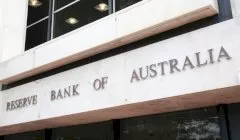Invest
How do low inflation and cash rates affect my portfolio?
How do low inflation and cash rates affect my portfolio?
The adage ‘lower for longer’ has been appearing in the financial media for some time now. With Australian consumer price inflation (CPI) at just 1.3 per cent for the year ended 31 March (negative 0.2 per cent for the quarter) and the RBA recently cutting cash rates to 1.75 per cent, lower returns for longer do seem inevitable. But how long is ‘longer’, and are we truly prepared for this reality?
At a recent Platinum Asset Management investor briefing, research was presented showing lower for (a lot) longer has historical precedent. The research – based on Credit Suisse’s Global Investment Returns Yearbook for 2016 – examined three great crises of capitalism. The first crisis was in the 1890s (Latin America debt crisis, global banking panic and recession), the second was the Great Depression of the 1930s and the last and most recent, the GFC of 2008.
The research shows that bond yields trended down for a decade or more from the onset of the crises in both the 1890s and 1930s. If history repeats itself with the GFC, we could be waiting quite some time for a recovery in yields.
What does this mean for investors? Expected investment returns are generally determined by reference to the rate of interest on cash. If cash is risk free, what return is required to lend money to a large, stable corporate? And what return do you require to invest in the shares of an Australian small company? Basically as you move up the risk curve, you expect to receive a higher return above cash.

Historically, the Australian cash rate has averaged around 5 per cent and if you need a margin of 4 to 5 per cent above cash to compensate you for an equity investment into a company, you’d have expected to reap a return of say 9 to 10 per cent per annum. Not bad if you can get it, but with historically low cash rates in Australia and even negative cash rates in some parts of the world, adding a risk premium of 4 to 5 per cent doesn’t get you anywhere near the 9 to 10 per cent we have grown used to. If investors accept lower returns from equities going forward, then lower returns are what we will probably get. Is this going to be enough to grow our hard earned savings and fund us in the retirements we have all come to look forward to?
The reality of lower investment returns for the next decade is a particularly harsh one as we’ve enjoyed such a purple patch here. We haven’t had a recession in over 25 years, the Australian share market (including dividends) has returned over 9 per cent per annum for over 50 years and Australian bonds have delivered over 6 per cent per annum for the last 15 years. I know ‘jobs and growth’ are at the top of the political agenda, but it is going to be a small miracle if this sort of prosperity continues for the next decade.
The adage ‘lower for longer’ shouldn’t be confined to the area of interest rates and bond yields. We should prepare ourselves for ‘lower for longer’ extending to all asset classes and Australian growth more generally. And if we want to be prepared for lower for longer, there are a number of other measures to take to achieve a comfortable retirement, although none of them are as easy as compounding money at almost double digit returns.
The levers available to compensate for lower expected returns are saving more, spending less and working longer. Increasing risk by changing your asset allocation or taking on gearing is an option too, but there are no free lunches, and by moving up the risk curve you are opening yourself up to a wider range of outcomes (including outcomes that are worse than you might achieve with your current risk profile).
The hardest thing will be adjusting our expectations if returns are lower going forward, as we’ve enjoyed high return happiness for as long as many people can remember. However, those saving for retirement need to prepare for the possibility of low to mid single-digit returns for the next decade and make the other tough choices to ensure they’re covered for it. If Australia is really the lucky country and we continue on our great streak, you’ll have a few extra holidays in retirement up your sleeve. But if our streak ends, at least you’ll be prepared.
Annika Bradley, Eviser

Cash
Cash usage in Australia continues to decline as digital payments rise
In the ever-evolving landscape of financial transactions, Australia is witnessing a significant shift away from cash, as revealed by Worldpay's latest Global Payments Report. According to the report, ...Read more

Cash
Navigating the equilibrium: Investor sentiment in the face of equity peaks and diminishing cash reserves
State Street's latest Risk Appetite Index indicates a nuanced shift in institutional investor sentiment during March, with the index reverting slightly towards neutrality. This subtle recalibration in ...Read more

Cash
RBA's November rate hike overshadows Melbourne Cup festivities
In a move that managed to draw attention away from the thrill of the Melbourne Cup, the Reserve Bank of Australia (RBA) has increased the cash rate by 25 basis points to 4.35 per cent, surprising ...Read more

Cash
RBA makes first cash rate call for 2022
The RBA has announced its first rate decision for 2022. Read more

Cash
Cash remains king for many Australians
Demand for banknotes remains high despite a decline in cash transactions. Read more

Cash
Interest rates to rise next year?
Commonwealth Bank has seconded Westpac’s predictions, forecasting that interest rates will rise well ahead of the RBA’s 2024 timeline. Read more

Cash
RBA makes latest official cash rate call
The Reserve Bank of Australia has made its May call on the official cash rate, with the economy said to be a long way from the conditions needed to precede a rate rise. Read more

Cash
RBA puts chatter of an earlier rate hike to rest
The Reserve Bank of Australia has put to rest chatter among investors that conditions for a higher cash rate could be met as early as next year, reaffirming its stance that the rate is “very likely” ...Read more

Cash
Cash usage in Australia continues to decline as digital payments rise
In the ever-evolving landscape of financial transactions, Australia is witnessing a significant shift away from cash, as revealed by Worldpay's latest Global Payments Report. According to the report, ...Read more

Cash
Navigating the equilibrium: Investor sentiment in the face of equity peaks and diminishing cash reserves
State Street's latest Risk Appetite Index indicates a nuanced shift in institutional investor sentiment during March, with the index reverting slightly towards neutrality. This subtle recalibration in ...Read more

Cash
RBA's November rate hike overshadows Melbourne Cup festivities
In a move that managed to draw attention away from the thrill of the Melbourne Cup, the Reserve Bank of Australia (RBA) has increased the cash rate by 25 basis points to 4.35 per cent, surprising ...Read more

Cash
RBA makes first cash rate call for 2022
The RBA has announced its first rate decision for 2022. Read more

Cash
Cash remains king for many Australians
Demand for banknotes remains high despite a decline in cash transactions. Read more

Cash
Interest rates to rise next year?
Commonwealth Bank has seconded Westpac’s predictions, forecasting that interest rates will rise well ahead of the RBA’s 2024 timeline. Read more

Cash
RBA makes latest official cash rate call
The Reserve Bank of Australia has made its May call on the official cash rate, with the economy said to be a long way from the conditions needed to precede a rate rise. Read more

Cash
RBA puts chatter of an earlier rate hike to rest
The Reserve Bank of Australia has put to rest chatter among investors that conditions for a higher cash rate could be met as early as next year, reaffirming its stance that the rate is “very likely” ...Read more









